Hurricane Ian's Florida destruction seen from space (satellite photos)

Satellites have revealed the scale of destruction wreaked by Hurricane Ian over Florida last week, but their images also show glimpses of recovery as lights can be seen coming back on where power has already been restored after widespread outages.
Hurricane Ian rolled over Florida last week as a powerful Category 4 storm, causing severe flooding in coastal regions due to a storm surge and torrential rains. The hurricane, which battered the coast with devastating winds of over 155 mph (250 kph), has killed nearly 100 Floridians, according to Florida Today on Monday (Oct. 3).
Earth-observing satellites operated by private companies and governmental agencies are playing a critical role in assessing the scope of the damage, as the satellites can peek into areas that might still be out of reach for ground-based rescue teams.
Related: Astronaut looks inside eye of Hurricane Ian from space as storm weakens over Florida (photos)
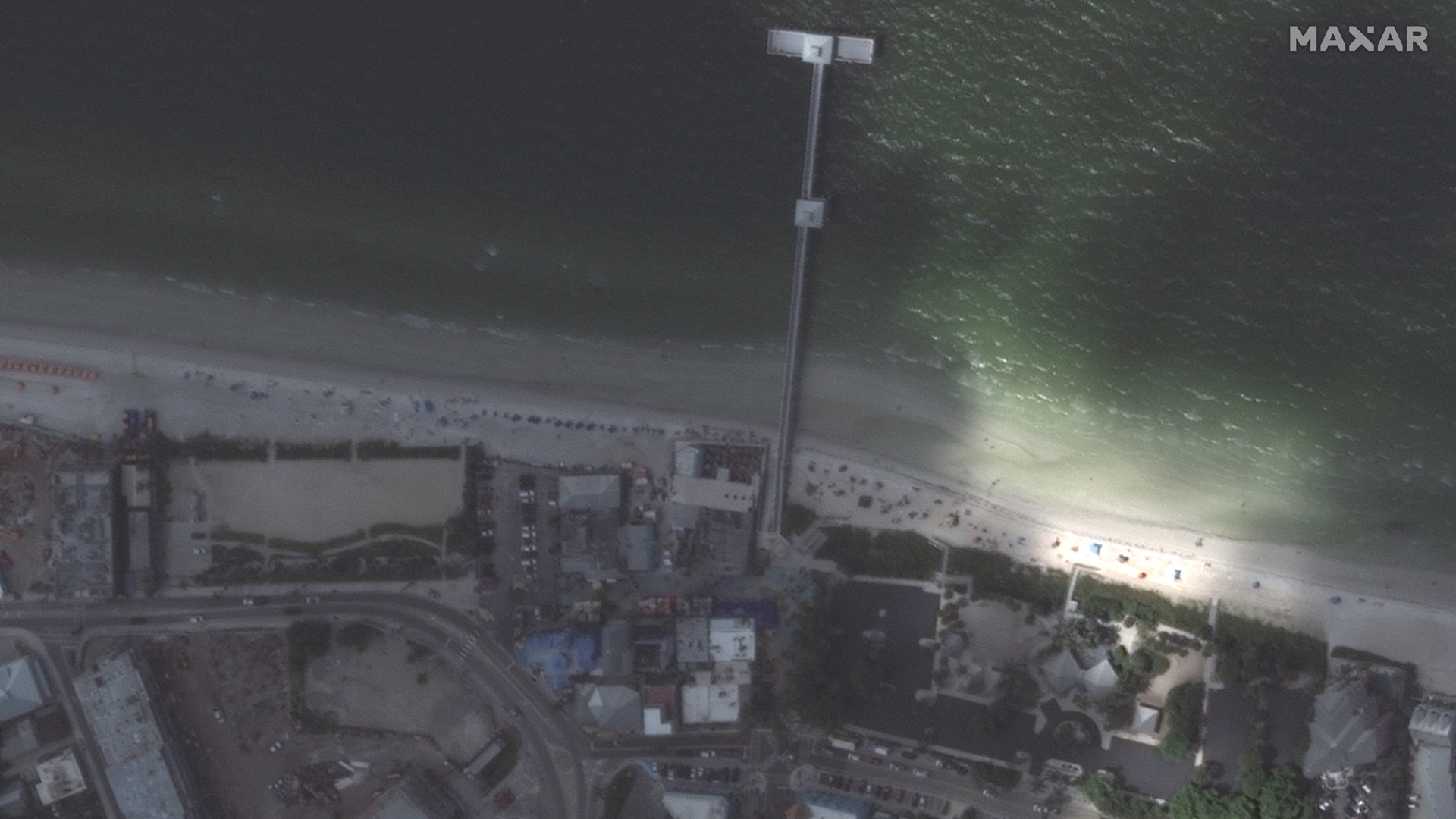
Satellites owned by the U.S. company Maxar Technologies captured devastation along the beach in Fort Myers, in County Lee, on Florida's west coast, where entire neighborhoods were wiped out by the storm surge, which raised sea level by more than 12 feet (3.7 meters) over normal tidal levels, according to Sky News.
Comparing images captured before and after Ian's rampage shows the difference around the Fort Myers beach: The fishing village around the pier appears completely wrecked by the storm, and so do many homes around the main boulevard.
Images collected by Maxar's competitor Planet show a collapsed causeway connecting Sanibel Island to mainland Florida.
Get the Space.com Newsletter
Breaking space news, the latest updates on rocket launches, skywatching events and more!
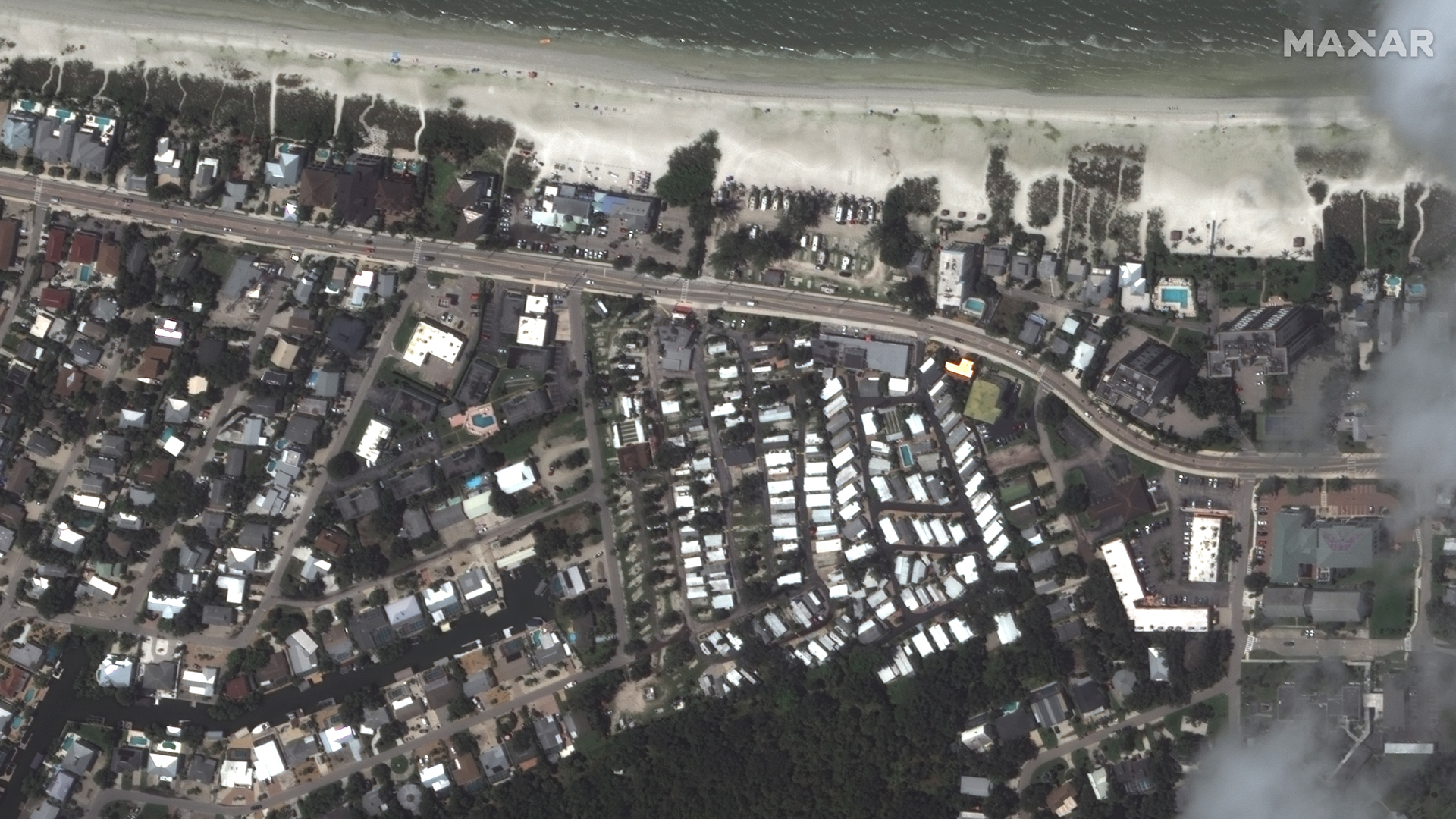
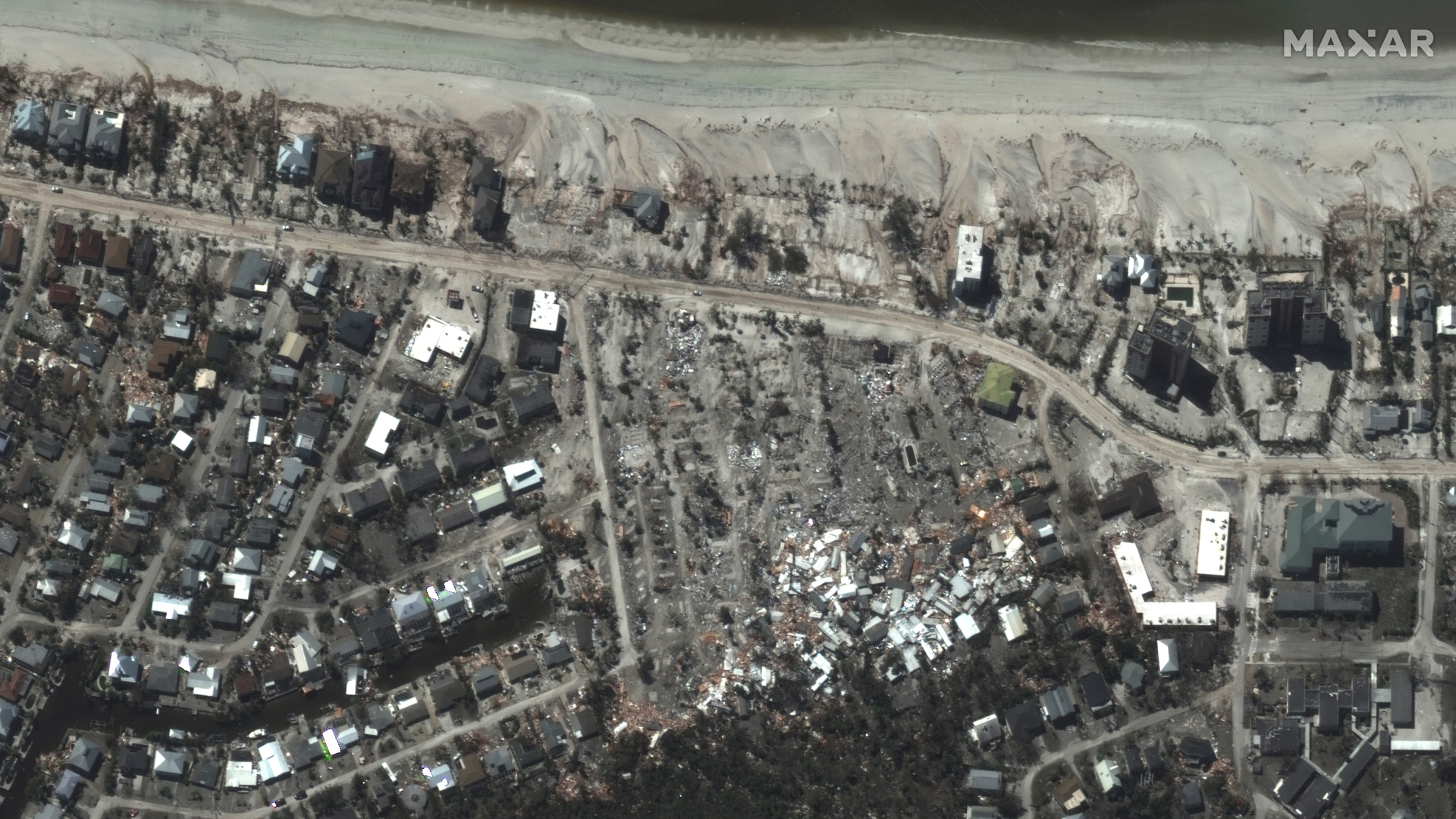
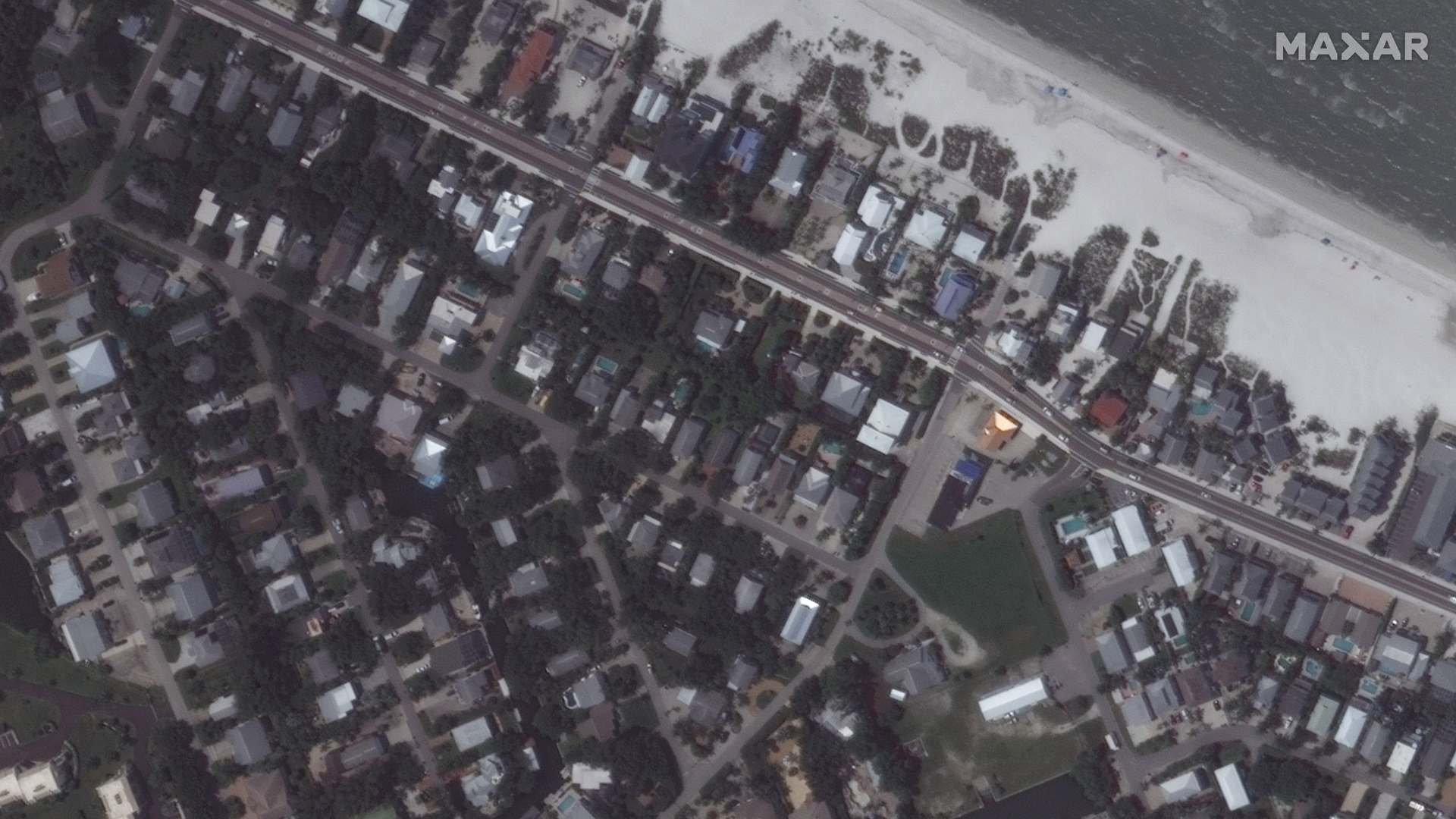
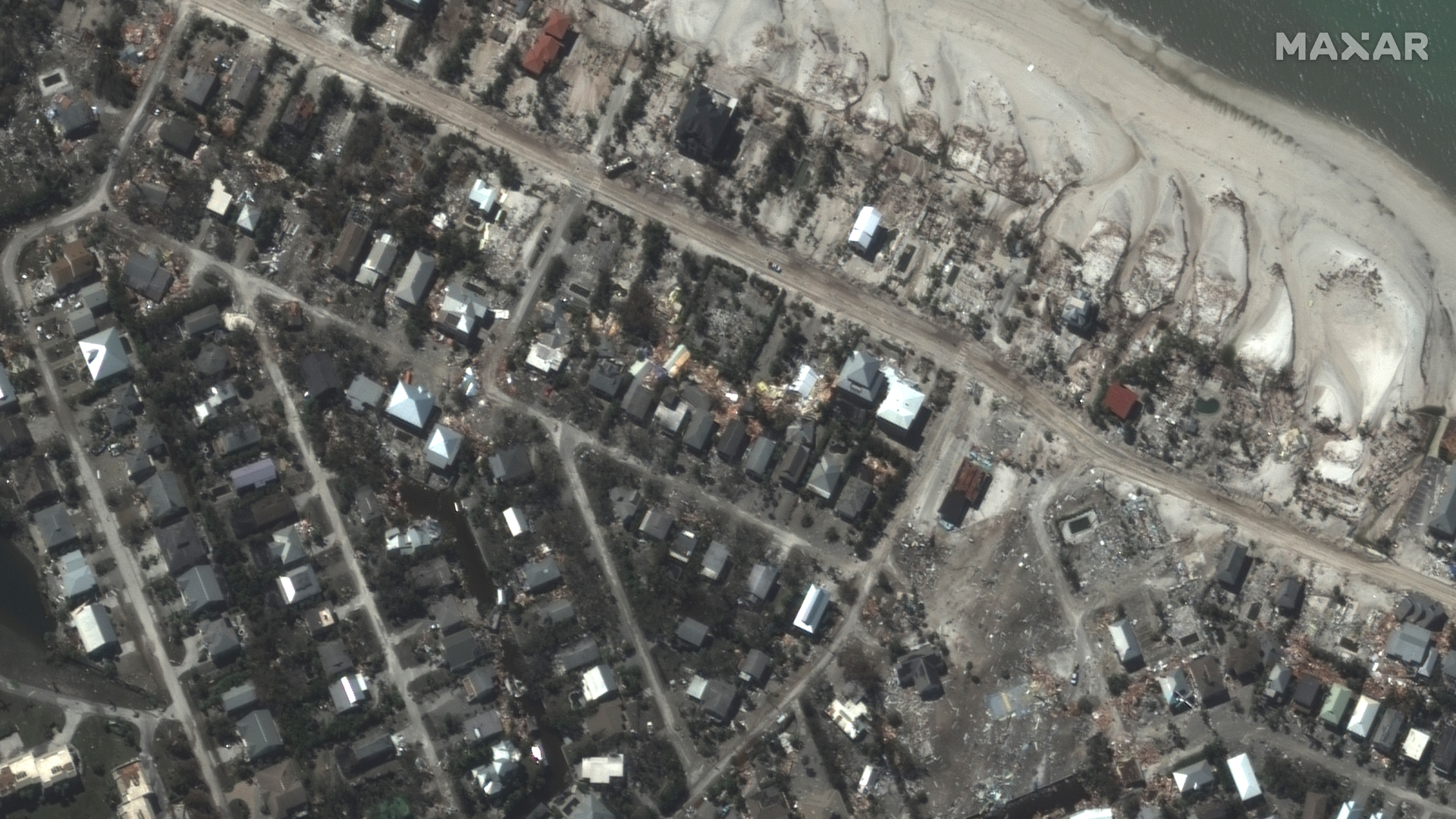
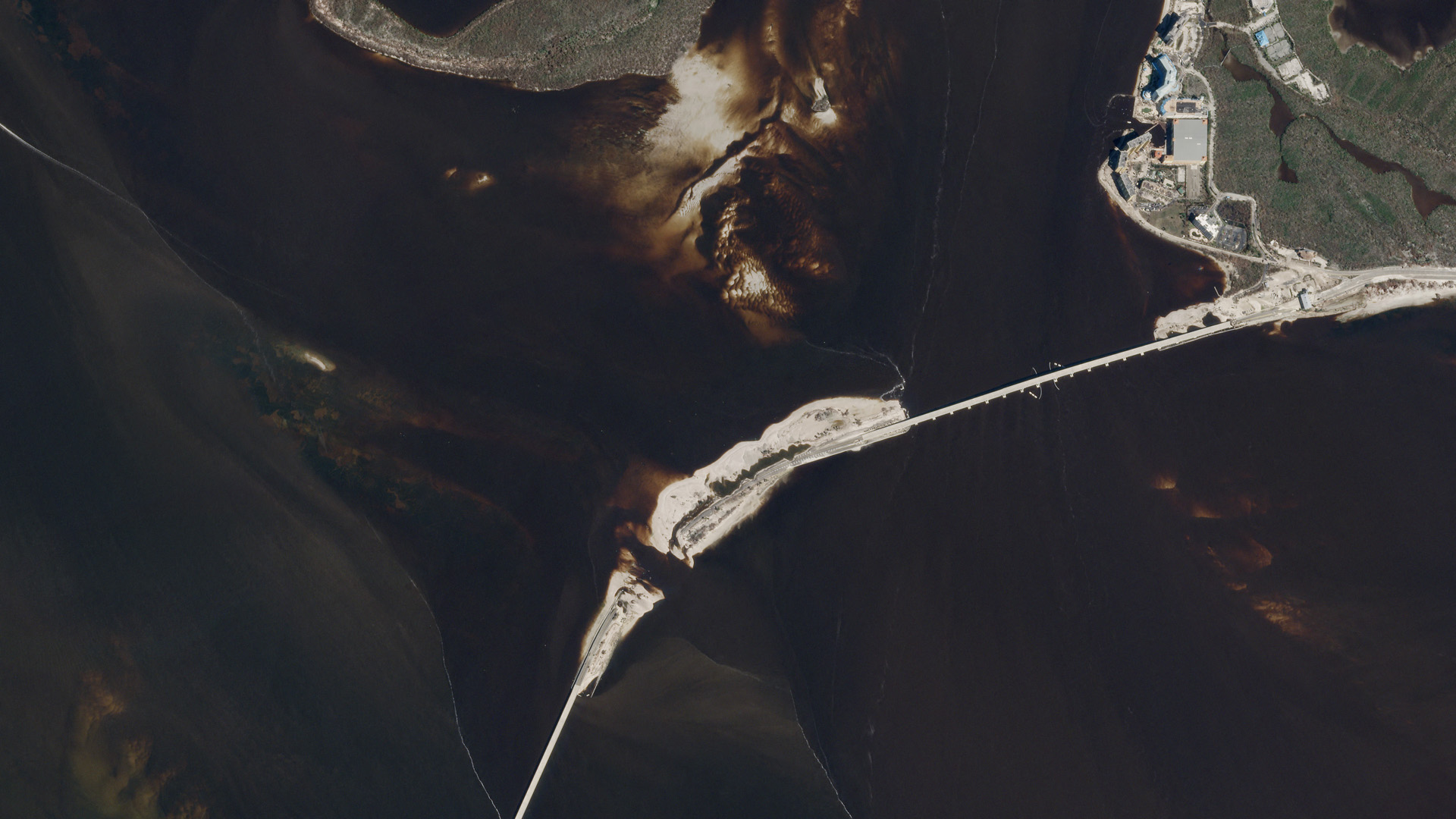
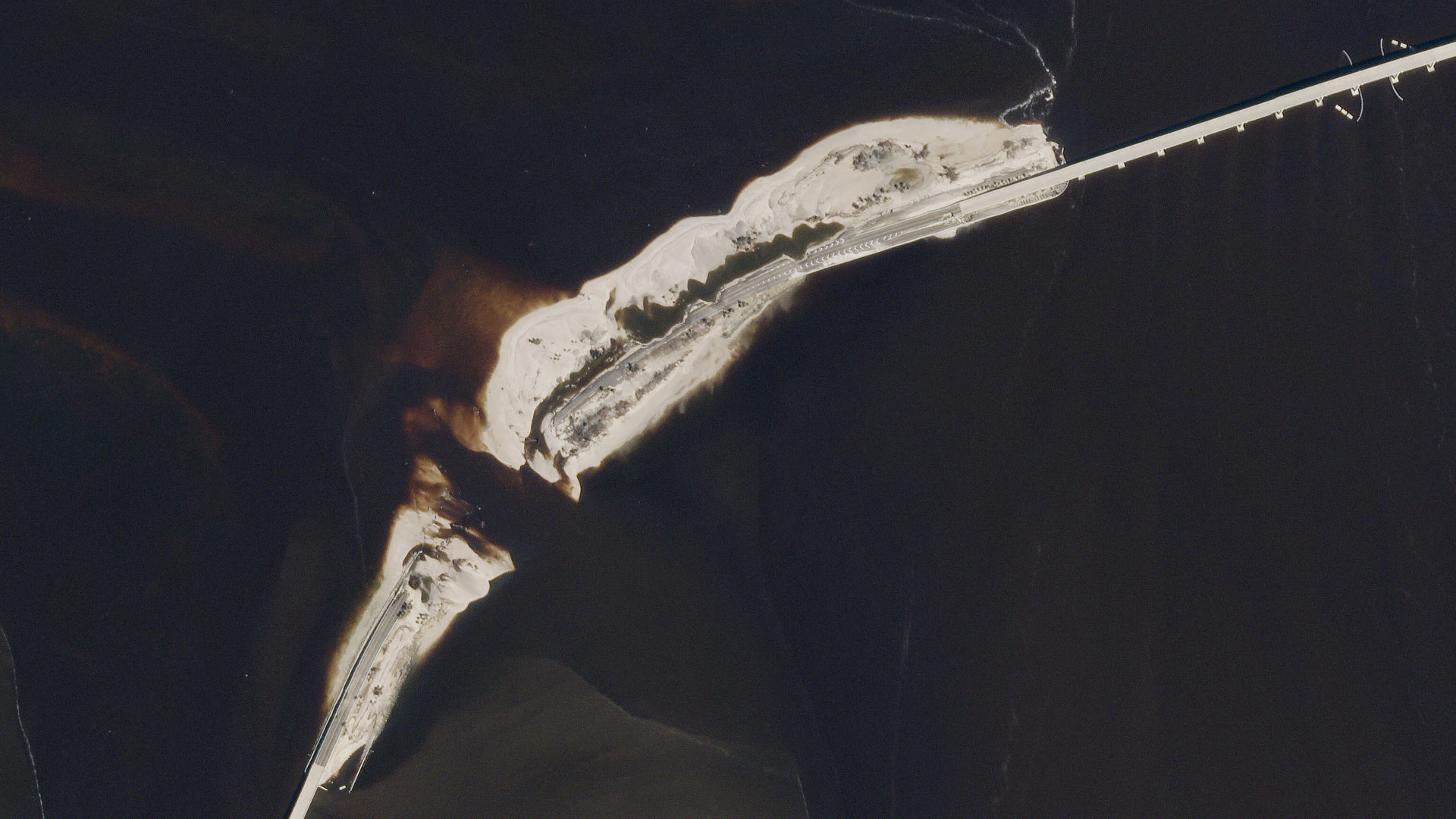
Lower-resolution images taken by satellites operated by the European Copernicus environment monitoring program and the National Oceanic and Atmospheric Administration (NOAA) showed runoff of dark, dirty water from the flooded coast changing the color of the turbid Gulf of Mexico.
In a more optimistic testimony, the NOAA 20 satellite captured a nighttime view of Florida that shows lights coming back on in many areas where power has already been restored after widespread outages following the hurricane's passage.
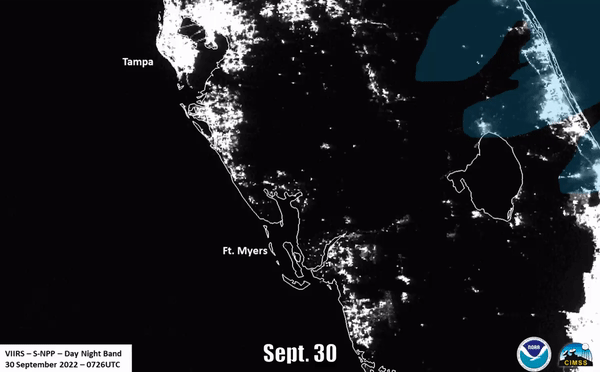
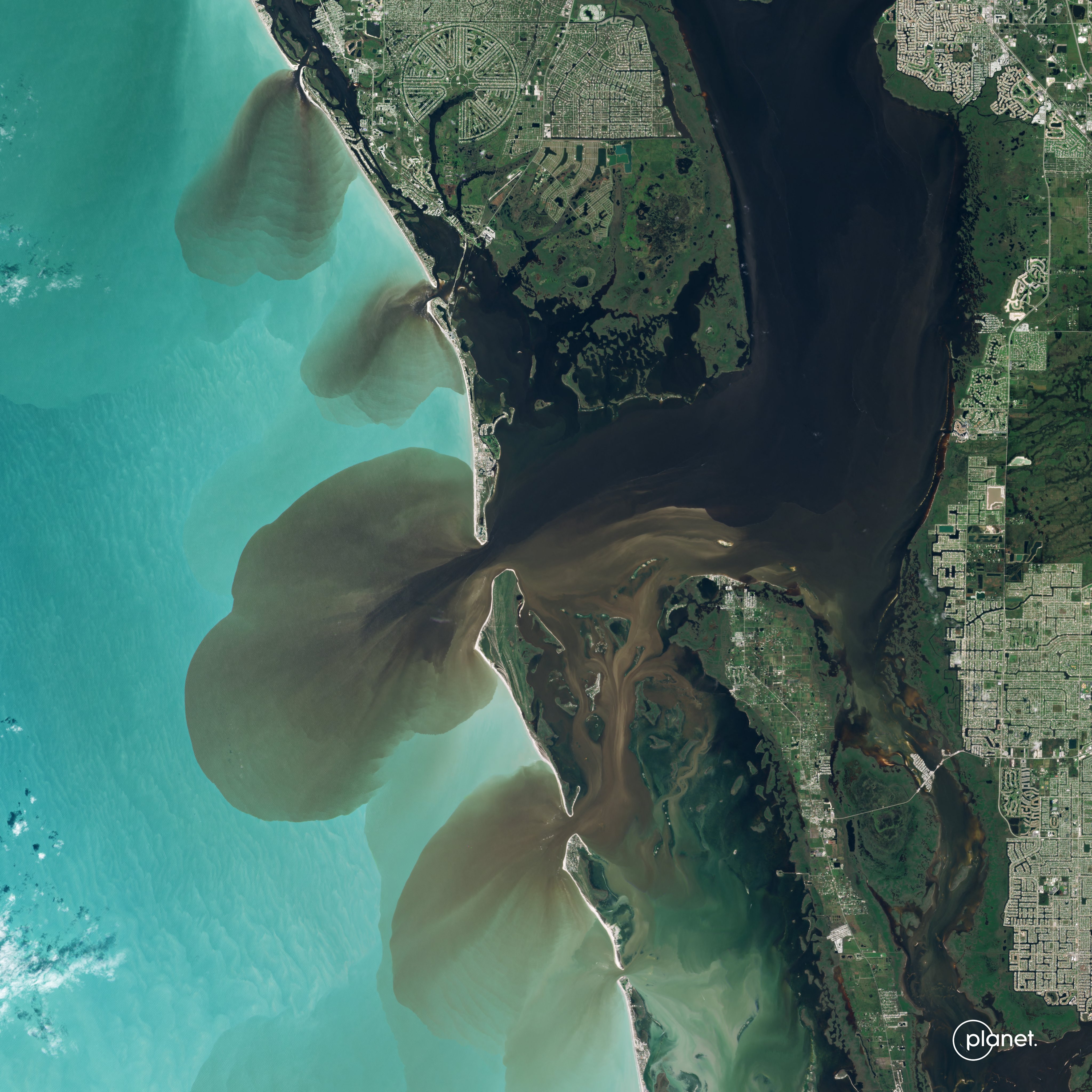
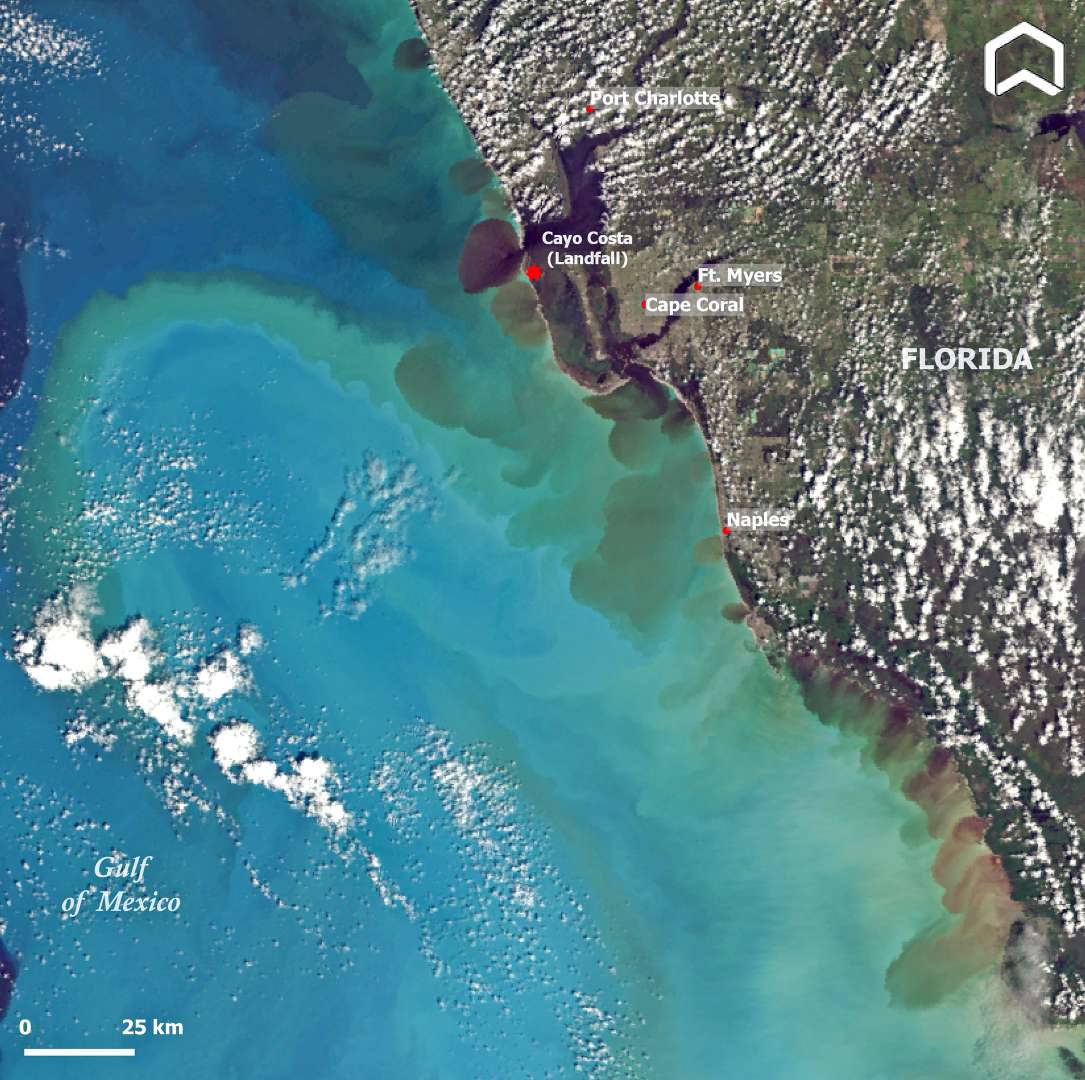
The 2022 Atlantic hurricane season had a slow start, with no named storms forming above the ocean in the whole month of August. Since then the activity has picked up. Just one week before Ian, Hurricane Fiona battered Porto Rico, its remnants making it all the way to Canada (an unusual phenomenon that might have something to do with the climate change, according to experts).
After Hurricane Ian pummeled Florida, it regained strength over the Atlantic Ocean before making landfall for the second time in South Carolina, cutting power to 200,000 homes and causing devastating floods.
While the residues of Ian are now dropping rain over New York and New England, weather forecasters are also monitoring Tropical Storm Orlene, which made landfall as a Category 1 hurricane in southwest Mexico on Monday (Oct. 3) pouring over 10 inches (25 centimeters) of rain on the coast.
Follow Tereza Pultarova on Twitter @TerezaPultarova. Follow us on Twitter @Spacedotcom and on Facebook.
Join our Space Forums to keep talking space on the latest missions, night sky and more! And if you have a news tip, correction or comment, let us know at: community@space.com.

Tereza is a London-based science and technology journalist, aspiring fiction writer and amateur gymnast. Originally from Prague, the Czech Republic, she spent the first seven years of her career working as a reporter, script-writer and presenter for various TV programmes of the Czech Public Service Television. She later took a career break to pursue further education and added a Master's in Science from the International Space University, France, to her Bachelor's in Journalism and Master's in Cultural Anthropology from Prague's Charles University. She worked as a reporter at the Engineering and Technology magazine, freelanced for a range of publications including Live Science, Space.com, Professional Engineering, Via Satellite and Space News and served as a maternity cover science editor at the European Space Agency.









